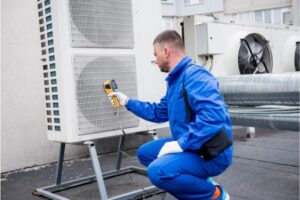ABC Cable, short for Aerial Bundled Cable, is an innovative overhead power distribution solution that replaces traditional bare conductors. Designed to enhance safety, efficiency, and reliability, ABC cables are a game-changer in urban and rural power systems.
Unlike old-fashioned open wire systems, ABC cable uses insulated conductors bundled together, drastically minimizing power theft, line faults, and maintenance costs.
Why ABC Cable Is Becoming the Global Standard
Aerial Bundled Cables are rapidly being adopted across residential, commercial, and industrial zones for several key reasons:
🔹 Safety First
-
Insulated design prevents accidental contact
-
Reduces chances of electrical shocks and fire hazards
-
Enhances protection in densely populated areas
🔹 Improved Reliability
-
Weather-resistant and corrosion-proof
-
Reduces outages caused by storms, trees, or animals
-
Less prone to mechanical damage and line snapping
🔹 Lower Installation Costs
-
Requires fewer poles and smaller clearances
-
Simplified construction process
-
Decreases infrastructure costs in remote areas
🔹 Theft Deterrence
-
Tamper-proof insulation discourages illegal tapping
-
Enhances energy accountability in urban networks
Technical Specification of ABC Cable (Typical Range)
| Parameter | Details |
|---|---|
| Conductor Material | Aluminum (1350 H19), Steel (Core) |
| Insulation Material | XLPE / PE / HDPE |
| Rated Voltage | 0.6/1 kV, 11 kV, 33 kV (varies by type) |
| Temperature Range | -40°C to +90°C |
| Standard Compliance | IEC 60502, ASTM B-231, NFC 33-209 |
| Installation Environment | Outdoor, overhead |
| Bundle Configuration | 2-core, 3-core, 4-core with neutral |
Common Types of ABC Cables
ABC cables are categorized based on voltage ratings and configuration:
➤ Low Voltage (LV) ABC Cables
Used in 230V/400V networks, mainly for service connections and rural electrification.
➤ Medium Voltage (MV) ABC Cables
Suitable for 11kV to 33kV networks in industrial or sub-urban systems.
➤ High Voltage (HV) Bundled Cables
Designed for special applications where compact routing is critical.
Use Cases of ABC Cable
-
Urban power distribution: Avoids congestion in narrow streets
-
Rural electrification: Economical solution for villages and remote towns
-
Temporary supply setups: Ideal for events and construction sites
-
Forested areas: Prevents tree contact, reducing fire risk
-
Cost-sensitive projects: Minimizes civil work and material usage
Advantages of ABC Cable Over Bare Conductor Systems
| Feature | ABC Cable | Bare Conductor |
|---|---|---|
| Safety | High – insulated | Low – exposed conductors |
| Theft Resistance | Excellent | Poor |
| Aesthetic Appearance | Neat and clean | Visually cluttered |
| Maintenance Frequency | Low | High due to exposure |
| Tree Clearance | Low requirement | High clearance needed |
| Fault Occurrence | Minimal | Frequent |
How ABC Cables Are Installed
The installation process is straightforward and cost-efficient:
-
Survey & Planning – Evaluate route and pole placement
-
Pole Erection – Use fewer poles due to flexible routing
-
Cable Stringing – Pulled and bundled using rollers
-
Tensioning – Adjust sag and tension properly
-
Anchoring – Use clamps and tension fittings
-
Connection – Connect to service cables or transformers
🛠 Specialized fittings such as suspension clamps, anchoring clamps, and service connectors are used to ensure longevity and safety.
ABC Cable Lifespan & Maintenance
-
Service life: 30 to 40 years under standard conditions
-
Maintenance needs: Minimal due to UV-stabilized insulation
-
Routine checks: Periodic inspection of fittings and tension
Maintenance is generally limited to visual inspections and rare hardware replacement. Since cables are insulated, there’s minimal need for vegetation clearing.
Expert Insights: Why Engineers Prefer ABC Cable
✅ “ABC cable drastically reduces maintenance efforts and enhances safety in narrow and congested areas.”
✅ “It’s ideal for developing countries where theft and harsh weather are major challenges.”
✅ “Installation is faster and more forgiving when terrain is difficult or undulating.”
Key Considerations Before Choosing ABC Cable
Before installing ABC cable, consider:
-
Voltage requirement (LV vs. MV vs. HV)
-
Span length and terrain type
-
Climate exposure (rainfall, UV, wind)
-
Load capacity and future expansion
-
National electrical code and standards
Choosing the right cable configuration and accessories ensures long-term reliability.
FAQs About ABC Cable
📌 What does ABC stand for in cables?
ABC stands for Aerial Bundled Cable, a type of insulated overhead power cable.
📌 Is ABC cable safe for residential areas?
Yes. The insulated nature of ABC cable prevents accidental contact, making it ideal for residential zones.
📌 What materials are used in ABC cables?
Typically, aluminum conductors with XLPE or HDPE insulation. Some variants include a steel messenger wire for support.
📌 How is ABC cable different from overhead bare conductors?
Unlike bare conductors, ABC cables are fully insulated and bundled together, offering better safety and lower maintenance.
📌 Can ABC cables be used in wet environments?
Yes. They are UV- and moisture-resistant, and suitable for coastal or high-humidity zones.
📌 How far can ABC cable span between poles?
Typical spans range between 40 to 70 meters, depending on configuration and tension design.
ABC Cable Installation Accessories (Quick Reference)
| Accessory | Purpose |
|---|---|
| Suspension Clamp | Supports cable without damaging insulation |
| Anchoring Clamp | Provides firm end-of-line hold |
| Insulated Piercing Connector | Ensures tap connection to service cables |
| Service Clamp | Attaches service cable to structure |
| Messenger Wire | Carries mechanical load |
Tips for Buying ABC Cable
-
Always verify standards compliance: Look for ISO, IEC, or ASTM specs
-
Choose the right insulation type for the environment (XLPE for heat, HDPE for durability)
-
Check the conductor class: Class 2 (solid) or Class 5 (flexible)
-
Buy from a certified manufacturer with traceable quality checks
-
Request technical datasheets to compare options
Industry Applications & Global Use
ABC cables are now standard in:
-
Developing countries with theft and reliability challenges
-
Isolated islands and hilly areas where underground cables are impractical
-
Temporary power setups for military, mining, and infrastructure projects
-
Post-disaster rebuilding as a quick, safe alternative
Why Utilities & Governments Are Transitioning to ABC Cable
🟢 Reduces energy loss due to improved insulation
🟢 Lowers total cost of ownership (TCO) with minimal maintenance
🟢 Increases operational safety for utility workers and the public
🟢 Improves power delivery efficiency and accountability
🟢 Supports renewable integration in decentralized grids
Scannable Summary: ABC Cable Benefits at a Glance
-
✔️ Insulated & safe for public use
-
✔️ Low maintenance over decades
-
✔️ Quick and cost-effective installation
-
✔️ Weatherproof and durable
-
✔️ Ideal for high-risk or theft-prone areas
If you’re planning a distribution upgrade or rural electrification project, ABC cable offers the perfect combination of modern safety, reduced maintenance, and cost savings — a forward-thinking solution for today’s energy demands.



